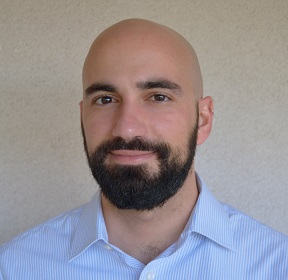Keynote Forum
Dr. Hitesh Sharma
CSIR-Indian Institute of Integrative Medicine IndiaTitle: Enzymatic synthesis of Biopolymers: A review
Abstract:
Enzymatic synthesis of Biopolymers: A review Green technology is taking over the industrial applications all over the world. As this technology is eco-friendly, less waste generating, low water requirement, low waste water generation and more importantly single step and specific reactions. Similarly, this technology is also being incorporated in the conventional methods for generation of biopolymers such as guar gum, xanthan gum, tamarind kernel powder etc. The process which is being utilized for this production is the enzyme based fermentation. Modified guar gum finds a wide variety of application as rheology modifiers in food and petroleum industries. Enzymes usually provide the efficient and very convenient method for modifying the structure of guar. High sugar containing media is also being fermented using different strains that can lead to high yield of xanthan gum. Tamarind kernel powder is also being modified using enzyme based processes as it finds a wide variety of application in food industries as a stabilizer, textile industries for printing the polyester fabric, in medical field also as a stabilizer in ointments and coating agents for tablets and in other industries such as leather industries, in pet food, paper industries and brick industries. The main enzymes being used in modifications of biopolymers are arrow mannanase, α-galactosidase etc. In this paper, we will be discussing about the previous reports in enzymatically modified biopolymers, current trends and future applications of the same. Key words: Green technology, biopolymers, fermentation, arrow mannanase, αgalactosidase
Speakers
Dr. Michele Casiello
ItalyTitle: New Biobased Polycarbonates with Curcumin in Replacement of Bisphenol A and Recycled Diphenyl Carbonate
Abstract:
The increasing level of plastic wastes in the environment is an urgent problem that needs fast responses. Actually, politics and researchers are pursuing two different strategies to reduce plastic dispersal: i) recycling of plastic items, and ii) incineration of plastic wastes [1]. In my recent work [2] me and my research group developed a way to convert polycarbonate (PC) containing bisphenol A (BPA) in a new polymer with Curcumin (CM) instead BPA: Curcumin is a natural polyphenol well-known for its antioxidant and pharmaceutical properties, that can represent a renewable alternative to bisphenol A for the synthesis of biobased polycarbonates. In the presented strategy, preparation of the CM-based PC was coupled with chemical recycling of the fossil-based BPA polycarbonate (BPA-PC) conducting a two- steps trans-polymerization that replaces BPA monomer with CM or its tetrahydrogenated colorless product (THCM). In the first step of synthetic strategy, depolymerization of commercial BPA-PC was carried out with phenol as nucleophile, according to our previous work [3] based on zinc derivatives and ionic liquids as catalysts, thus producing quantitatively diphenyl carbonate (DPC) and BPA. In the second step, DPC underwent a melt transesterification with CM or THCM monomers affording the corresponding bio-based polycarbonates, CM-PC and THCM-PC, respectively
Biography:
Michele Casiello currently works at the Department of Chemisty, Università degli Studi di Bari Aldo Moro. Michele does research in Organic Chemistry, Catalysis, Environmental Chemistry and Green Chemistry. His recent project involved the collaboration with Arcelor Mittal a multinational steel manufacturing for the development of MIDREX process in the production of steel. His most recent publication is “Steel slag as low-cost catalyst for artificial photosynthesis to convert CO2 and water into hydrogen and methanol.”
Dr Rene saint loup
FranceTitle: POLYSORB®- a versatile monomer for improving thermoplastics and thermosetting properties
Abstract:
Isosorbide or 1,4-3,6 dianhydrohexitol, derivated from starch and more precisely from sorbitol, is one of the chemical intermediates of interest in the field of thermoplastic materials and for curable resins application. It can be used directly as a monomer or after chemical modification.
Hence, isosorbide found its place as a monomer suitable for polycondensates synthesis1 like polyesters, polycarbonates and thermoplastic polyurethanes. Concerning aliphatic2 or semi-aromatic polyesters3, the addition of isosorbide increases glass transition temperature, opening to this new polymer several usual applications of amorphous polymers. The preparation of poly (ethylene-co-isosorbide) terephthalate with different ratios of isosorbide will be particularly detailed. The structure – properties relationship will permit a focus on the obtention of polyesters with semi-crystalline or amorphous structures. The influence of isosorbide on the polymerization, on the processing of the resulting polyester as well as the modification of the final properties will be enlightened.
The use of isosorbide as a precursor for epoxy derivatives has been studied as solution to obtain interesting thermosetting compositions with improved mechanical properties (UV resistance, high toughness). Some examples of the applications of these derivatives will be given.
Poster
Mr Muhammad Jahangir Shafi
Institute of Molecular Biology and Biotechnology, Bahauddin Zakariya University, PakistanTitle: ASSOCIATION OF URINE PROTEIN WITH CONTACT LENS USE
Abstract:
Objective of current research show association of urine protein with contact lenses. Subjects that participated in the recent analysis were subjects of BZU, Multan, Pakistan and they were under 21-23. Urine protein like albumin when present in high amount in urine it causes major issues. Briefly represent that people with positive reports were using contact lenses. Men were using in high number than females.
Biography:
Muhammad Jahangir Shafi is biotechnologist and researcher by profession. He has been worked with one of the Government hospitals that is PIMS (Pakistan institute of medical science hospital) in Islamabad. He holds an MSc in biotechnology and currently pursuing a Master of Philosophy degree in biotechnology at The Islamia University of Bahawalpur, Public University of Pakistan. Muhammad Jahangir Shafi has one years of public practice at pathology laboratory of PIMS in Islamabad. He has published different research papers in different journals at international level.
E-Poster
Dr Claudio Zanca
University of Palermo, Viale delle Scienze ItalyTitle: Fabrication of Chitosan-Silver Nanoparticles composite coatings by galvanic deposition for orthopaedic implants
Abstract:
Metallic materials represent the best choice for fabrication of orthopedic implants, thanks to mechanical properties similar human bones. Corrosion phenomena could occur, although metals could be widely used in the field of biomedical implants. In addition, these phenomena could release metal ions around periprosthetic tissues leading, in the worst cases, to the development of infections. Patients need prolonged antibiotic therapies that may cause bacterial resistance. Preventing bacterial colonization of biomedical surfaces is the key to limiting the spread of infections [1-3]. Antibacterial coatings have become a very active field of research, strongly stimulated by the increasing urgency of identifying alternatives to the traditional administration of antibiotics.
Nowadays, the research was focused on coating science to deal with these issues. In particular, the development of the antibacterial composite coatings could be a viable way to provide not only a corrosion resistance but also an antibacterial action and biocompatibility. Chitosan is a great biomaterial used in medicine. It is a natural bioactive polymer and is the second most abundant in nature polysaccharide after cellulose. Chitosan comes from the deacetylation of chitin, a homopolymer of β-(1-4)-N-acetyl-D-glucosamine, derived from exoskeleton of crustaceans [4]. It is high biocompatible and it is also used in drug delivery. In addition, chitosan has chelating properties due to the amino groups of polysaccharide that are responsible of selective chelation with metal ions. In particular, the attention has been paid to silver nanoparticles for their high stability, low toxicity, biocompatibility and antibacterial properties. These ones are incorporated in polymeric matrix (e.g. chitosan) and they are capable to interact physically with cell walls of bacteria.





